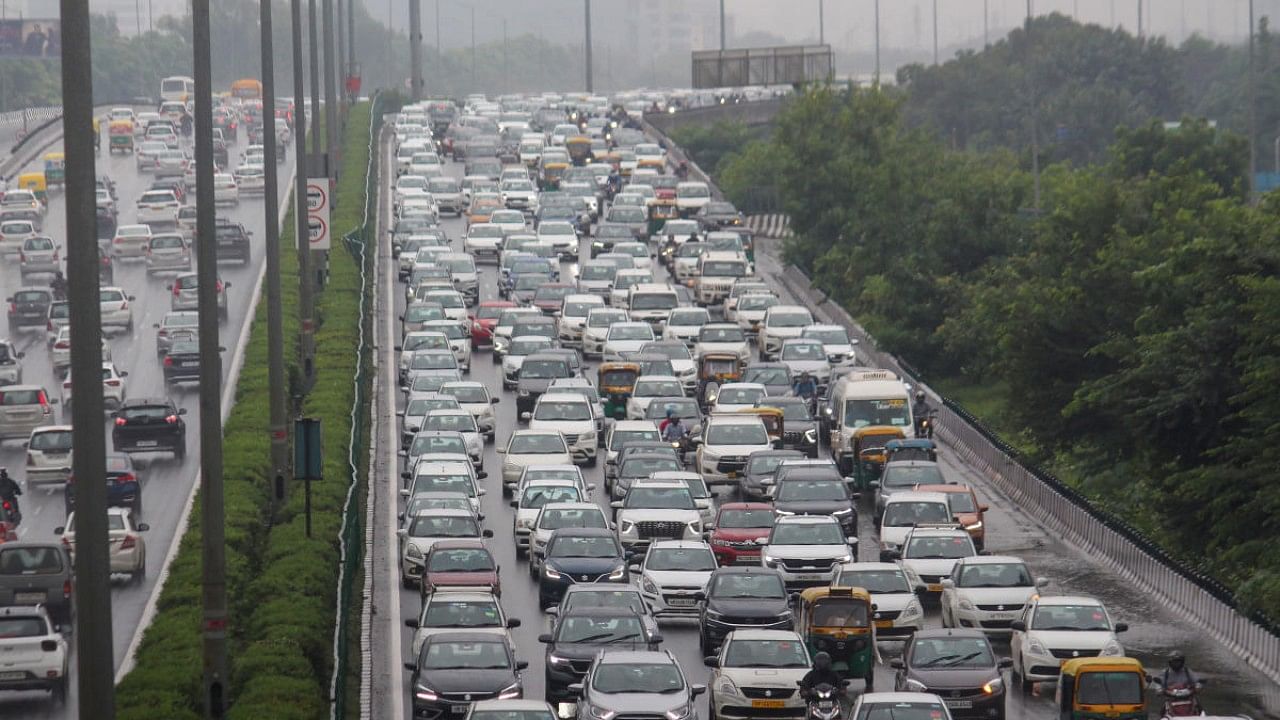
Is there a point where you’ve done so much driving that you can’t take it any more? The answer may be crucial to our ability to halt climate change.
The electrification of road transport is continuing at a breakneck pace. In China last month, nearly a third of cars sold were new-energy vehicles. In Europe, the equivalent figure in the June quarter was 19 per cent, rising to 41 per cent if conventional hybrid cars are included.
That’s evidence that the shift in the world’s vehicle fleet to electric drivetrains is proceeding faster than some of the most bullish mainstream predictions. Sales of gasoline, which consumes about a quarter of the world’s oil, have already peaked, according to the International Energy Agency. Those of road fuel in general — which includes a roughly similar volume of diesel, used mainly in trucks, motorbikes and three-wheelers, as well as a significant slice of European cars — are forecast by many analysts to top out before the end of this decade.
Even so, with new-car sales only adding about 5 per cent to the global fleet of around 1.5 billion cars each year, the biggest factor behind this change will for some time be the vast increase in conventional fuel efficiency achieved over the past 15 years. The average pickup sold in the US right now gets more miles per gallon than the average sedan sold in 2014, and the average sedan goes almost twice as far as it did in 2010. Those standards aren’t just a luxury of rich countries: They’re being replicated from the US and Europe to China and India.
Most of these efficiency criteria were introduced around a decade ago in the wake of the 2008 oil-price spike, meaning they’re going to take a growing bite out of consumption in the years ahead as older, more gas-guzzling vehicles are scrapped at the end of a typical 12-year life. The result is that even as people in lower-income countries buy their first scooter and then trade up to heavier and larger vehicles, the slide in road-fuel usage in richer nations will push down total crude demand.
There’s just one problem with this picture. What if, instead of causing people to use less gas, energy efficiency just leads them to drive more?
We’ve seen this scenario play out before. As US gasoline prices soared in 2008, traffic — as measured by vehicle miles traveled, or VMT — collapsed. The initial weakness wasn’t that surprising in a measure often seen as a proxy for economic growth. Its persistence, though, was shocking. The seasonally adjusted measure didn’t rise above its January 2006 level until nearly nine years later, in December 2014.
That prolonged slump broke an “iron law” of 20th century transport, Stephen Dubner, of Freakonomics fame, wrote at the time. Not a man shy of proffering hypotheses to explain human behavior, he declared himself stumped. Perhaps it was the cost of fuel, or government policy, or congestion, or millennials moving to the inner city, or the growth of women in the workforce, or a saturated auto market? Or maybe we’d all just reached a point where we didn’t have any spare minutes in the day left for driving?
Steven Polzin, a transport expert at the University of South Florida, concluded there’d been a “critical juncture” and VMT would never again grow the way it had in the past.
The next shift in the data was even less expected. After almost a decade in the doldrums, VMT started rising again in 2015 at roughly the same pace as it had in the early 2000s. Only the Covid-19 pandemic and its aftermath managed to bring it to a halt.
The best explanation for this is probably that fuel efficiency and the fall in oil prices in 2014 conspired to make driving cheaper than it had ever been. As anyone who’s watched a car advertisement could recognise, people would far rather get behind the wheel for fun than for work, or shopping, or picking the kids up from soccer. Data from Europe seem to bear this out, with richer countries doing more leisure travel, while people in poorer ones drive mostly for work.
That’s an oddly troubling prospect. If the 2006 to 2015 peak in American VMT was an illusion — as now seems clearly to have been the case — then perhaps the more recent slowdown is another. UK data, which followed the same dip-and-revival pattern as the US, certainly point to fuel efficiency cannibalising itself as the best explanation.
Eventually, the rapid uptake of electric vehicles will decouple VMT from oil demand. The post-Covid fall in labor-force participation, which means fewer people driving to work, is a further headwind, according to energy analyst Philip Verleger. Still, we shouldn’t ignore the risk that a 2015-style uptick in driving once the current $4-a-gallon gasoline era is over might give one last boost to petroleum. That’s especially likely if those miles are driven in pickups and SUVs, whose rising popularity also probably owes a lot to declining running costs as their efficiency improves.
The world can ill-afford such a shift, at a time when it badly needs to start reining in the roughly 12 per cent of emissions that come from road transport. Let’s hope that Dubner’s last conjecture was right, and that this time around there just isn’t enough space on the road or hours in the day to drive any further. We’ve been hooked on motoring since the days of Henry Ford. Breaking the addiction may be harder than we hope.